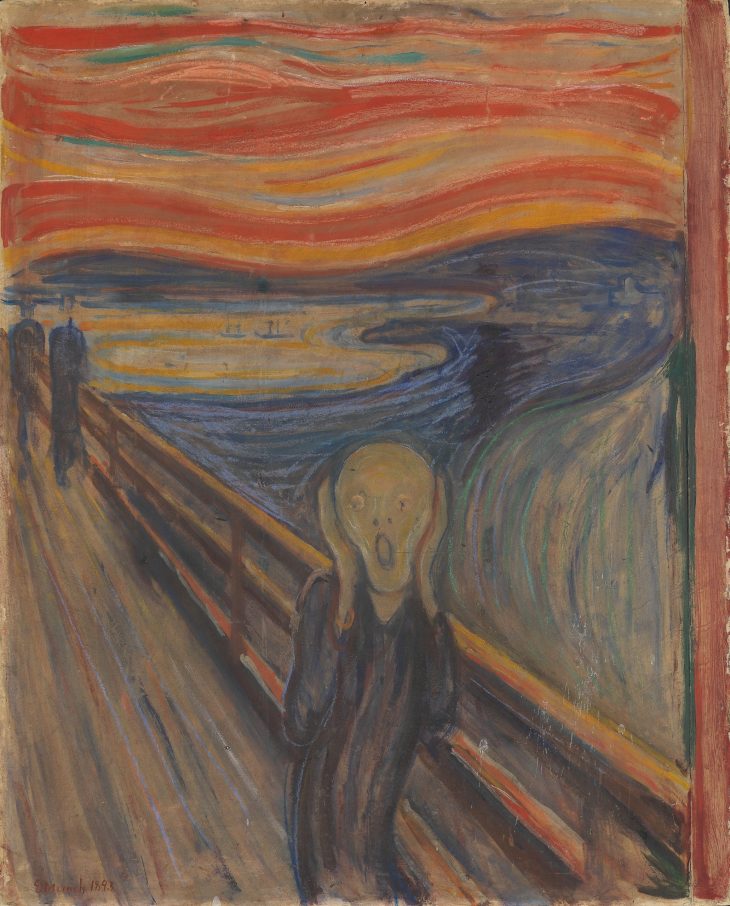Edvard Munch
Fundamental Paintings to Understand the History of Painting
We could make this publication thanks to small donations. How is 3 minutos de arte supported?
The Scream (1893). Edvard Munch
Oil, tempera and pastel on cardboard. 91 cm x 74 cm
National Gallery of Norway.
Munch said once that as Leonardo da Vinci studied the human anatomy by dissecting bodies, he tried to dissect souls.
Thanks to this painting —which is the most representative of his production and a cultural icon, which means that a significant number of people identifies this painting— Munch is considered as a “precursor of the Expressionism.”
Munch was fascinated and influenced by the works of Van Gogh and Paul Gauguin. At the same time, instead of painting by reproducing what was external to him, he started to express the deepest feeling and emotions in his paintings. The world is seen according to the mood. That is Expressionism.
In his technique, he used two resources that characterize such movement: the “emotional distortion” of the figure —we can see in this painting that the face is distorted to transmit its emotion— and the strident color as a tool to highlight the mood.
Recommended links:
You can also find more material using the search engine.




0 Comments